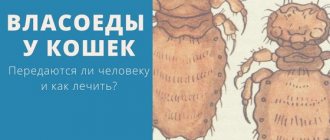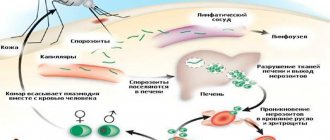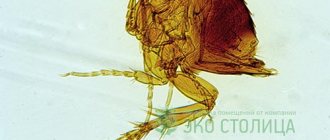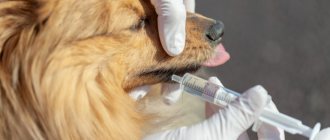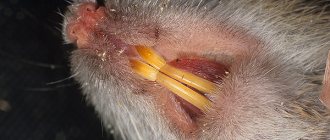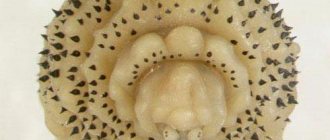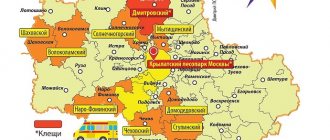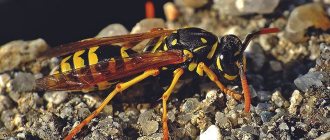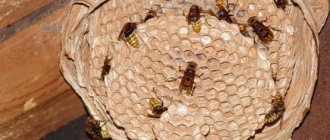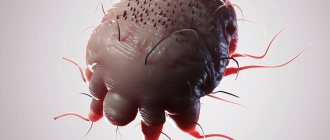Malaria mosquitoes are a species of dipteran insects that transmit malaria parasites. These parasites cause a serious disease in humans - malaria. Infection occurs during a bite.
Malaria mosquitoes live on all continents except Antarctica, but the most dangerous species live in subtropical and tropical countries.
In other regions, insects appear in places with high humidity and become active in the evening and at night. Rating: 10 best mosquito repellents
Rating: 10 best mosquito repellents
Even the best spray against mosquitoes and ticks in nature does not always protect against other blood-sucking insects...
netkomaram.ru
Open ›
If you suspect a malaria mosquito bite, you should immediately consult a doctor.
Characteristics and life cycle of an insect
Surely you are familiar with the situation when, at the sight of a large, long-legged insect circling nearby, people ran away or tried to kill it, explaining their fear by fear of contracting malaria. In fact, the centipede mosquito is completely harmless.
The long-legged mosquito is often called malarial, but this is a gross mistake
The malaria mosquito looks completely different. Anopheles, as this insect is called in scientific circles, has a great external resemblance to the common squeaker, but there are some differences:
- the legs of the malaria mosquito are longer than those of a normal mosquito;
- the female Anopheles has jointed tentacles on her head the same length as the proboscis. In an ordinary squeak, these tentacles do not exceed 1/4 of the length of the proboscis;
- the wings of malaria mosquitoes are covered with dark spots;
- Anopheles, which is at rest, places its body at an angle relative to the surface, an ordinary piskun - almost parallel to the plane;
- Before biting the victim, the malaria mosquito performs intricate steps in the air, reminiscent of a dance.
Sometimes you can distinguish Anopheles from an ordinary mosquito only by its position on the surface of the victim’s skin
Reproduction and nutrition
Young winged mosquitoes (imago) are initially found in the coastal thickets of a reservoir. During this period, insects (regardless of gender) feed only on plant juices. It is worth noting that Anopheles are more picky in choosing a habitat and reproduction: these insects choose reservoirs that are not overgrown with mud and reeds with clean water that has a slightly alkaline or neutral reaction. The female then mates with the male, searches for prey and drinks the blood necessary for the normal development of the eggs. After sitting for several days in a dark room or thickets of bushes, the individual lays eggs in a favorite body of water, the number of which can range from 60 to 350 in each clutch.
This is interesting! After laying eggs, the female Anopheles again feeds on plant juices without showing any aggressiveness. This lasts about 48 hours. Then the whole process is initiated all over again: mating, searching for blood, hatching and producing offspring.
The number of clutches, and accordingly the number of generations of mosquitoes, can vary from 2 to 6, even up to 7. The duration of summer has a great influence on the reproduction of individuals.
The eggs hatch into larvae that live at the surface of the water and breathe air thanks to special holes in the back of the body. The optimal temperature for the development of Anopheles larvae is 25 oC.
The development period of the malaria mosquito larvae is several weeks.
Under such conditions, pupae and then adults may appear within 15 days. If the water temperature is lower, then the development process is delayed and can last up to 4 weeks.
Area
Malaria mosquitoes live on almost all continents. Due to the fact that this type of insect dies at very low temperatures, Anopheles is not found only in Antarctica and the Far North. In Russia, the distribution area of these “bloodsuckers” covers the entire European part; they are also found in Western Siberia, that is, where the climate allows them to reproduce. The common malaria mosquito is found in the Far East, but the temperature conditions here are too harsh, so plasmodia (parasitic organisms) are not able to safely complete their life cycle and die.
Experts' opinion
Experts recommend that people who have had malaria be under the supervision of medical personnel for 2 years. If there is a fever, you should donate blood for testing.
The disease is preventable. People traveling to areas where the mosquito is infected should take anti-malarial medications. When living in areas of potential threat, you should cover windows and doors with mesh or sleep under a special mesh canopy. It is better if it is treated with an insecticide. From the beginning of twilight until dawn, hands and feet should be well protected. Exposed parts of the body must be treated with repellents.
How dangerous is the malaria mosquito?
Anopheles is a carrier of malarial plasmodium, which is harmful to the body. Every year about one million people infected with this terrible disease die on our planet. Despite the fact that this disease is most common in the tropics, cases of malaria infection also occur in Russia (in 2022, 9 cases of the disease were recorded).
This map shows the regions with the highest risk of malaria
Malaria is a group of infectious diseases transmitted from person to person through an infected insect. The disease is carried only by female anopheles, since males do not feed on blood. Female individuals have a longer life expectancy (about 2 months). For the entire time after consuming the blood of a person suffering from malaria, they are a source of disease.
In addition to malaria, Anopheles can carry about 50 types of other viruses, including encephalitis, yellow fever, lymphatic filariasis, and tularemia.
Biological characteristics of mosquitoes
The life of a female consists of repeating cycles: searching for a host (prey), blood sucking, development of sexual forms, flight to a reservoir and laying eggs. Such cycles are repeated 8 to 10 times. In this case, up to 20% of females die.
Breeding sites
Before the eggs mature, female malaria mosquitoes hide in well-lit and warm water bodies rich in vegetation. Female mosquitoes of the genus Culex hide near housing - in pits, ditches, barrels, sheds, attics, burrows, and artificial reservoirs.
Locations of the attack
Female mosquitoes need human or animal blood to mature their eggs. Females of Anopheles maculipennis most often attack in houses, Anopheles hyrcamus - in the open air, females of the genus Cules - near the home, in houses, near populated areas.
Seasonality
The period of activity of female malaria mosquitoes is from spring to autumn. The maximum number of bites is recorded in July and August. Female non-malarial mosquitoes are more likely to bite humans in August and September. In the tropics, the period of mosquito activity reaches 8 - 10 months, in the equatorial countries of Africa - all year round.
Laying eggs
Female malarial and non-malarial mosquitoes lay eggs singly on water; non-malarial mosquitoes also lay eggs near water - on the bottom of a dry reservoir or its banks.
Rice. 9. The photo shows a Culex mosquito bite.
Symptoms of infection
The skin reaction to an Anopheles bite is no different from the reaction to contact with an ordinary mosquito. People typically experience the following symptoms:
- local swelling of the skin (reaction to an enzyme in insect saliva) measuring no more than 2 cm in diameter;
- slight redness of the bite site;
- slight compaction;
- itching
The bites of an anopheles and an ordinary mosquito have no external differences
If you do not scratch the bite of an ordinary mosquito, the discomfort will disappear on its own after a few hours. At the same time, people prone to allergic reactions may suffer more, since the swelling in the damaged area is more extensive, the itching is stronger, and in some cases a rash may appear and enlarged lymph nodes may be observed. Taking antihistamines can help you get rid of discomfort in 1–2 days.
Allergy sufferers experience much more discomfort from a mosquito bite
If the bite was caused by a malaria mosquito, symptoms of the disease appear on average a week after infection, that is, when the incubation period of the disease ends. Signs of malaria may include:
- a sharp increase in body temperature;
- chills, often followed by fever;
- increased sweating;
- weakness;
- joint pain;
- vomit;
- convulsions;
- jaundiced skin color;
- severe headaches;
- dry cough;
- cerebral ischemia (a dangerous condition that develops in response to oxygen deprivation).
These symptoms often alternate, giving way to one another. Attacks of malarial fever can last from 4 to 8 hours. Subsequently, the disease progresses and causes serious disturbances in the human body: anemia appears, the liver and spleen enlarge.
At the first symptoms of malaria, you should immediately go to the hospital
As mentioned above, malaria mosquitoes can act as carriers of other infections. Therefore, if the previously described symptoms appear, as well as a slight fever, headache, conjunctivitis or general malaise following an insect bite, you should immediately seek help from a medical facility. A correct and timely diagnosis saves lives!
Development of malarial plasmodium
In humans, malaria can be caused by four types of Plasmodium: the causative agent of 3-day malaria, 4-day malaria, and it can also be tropical malaria and the pathogen ovale.
Plasmodium malaria develops as follows:
- All types of Plasmodium undergo asexual development in humans, which is called schizogony. Schizogony consists of two main phases: tissue, which takes place in the liver, and erythrocyte.
- Sporogony, that is, general sexual development in pathogens, occurs precisely in the human body. Sporozoites from the blood will be able to penetrate the liver cells, then they will turn into schizonts, and then after 7-9 days up to 50,000 ordinary parasites are formed, which are called merozoites. Now some of these creatures are released into the blood, and the rest will come out a little later, forming a classic picture of the course of the disease.
- The schizonts will divide to produce up to 24 blood merozoites. When the red blood cells are already destroyed, the merozoites will again enter the blood and enter other red blood cells; this cycle lasts up to 72 hours.
- In addition to the schizont, female and male gamete cells will develop in erythrocytes, gamonts . When a mosquito bites, it will swallow such gamonts, and in its stomach they will turn into mature gamete cells. Now the zygote, that is, the fertilized cell, goes into the stomach of the mosquito and becomes an oocyst, it divides and forms thousands of sporozoites, which, when bitten by a person, end up in his wound.
First aid after a bite
It is quite difficult to notice what kind of mosquito has bitten you, a regular one or a malaria one. Therefore, the first step after contact with an insect should be to take antihistamines, for example, Claritin or Tavegil. This way you can get rid of a possible allergic reaction or alleviate it.
If you are bitten by a mosquito, the first thing to do is take an antihistamine.
The bite site should be treated with Fenistil gel. This remedy will help relieve redness and itching. Among the folk methods for local skin treatment, you can use ice cubes, tea bags, brilliant green, potassium permanganate solution, aloe juice, plantain leaf.
Fenistil gel perfectly relieves allergic reactions
Malaria is diagnosed using blood tests (smears) that identify the type of Plasmodium falciparum. You should know that it also takes time to get results, so the sooner you see a doctor, the greater the likelihood of a successful outcome.
Important to remember! Malaria is a deadly disease. Those most at risk are young children and pregnant women. At the slightest suspicion of a malaria mosquito bite or if any signs of infection appear, you should immediately seek help from an infectious disease doctor.
Malaria can only be cured using traditional medicine.
Currently, there are diagnostic tests using immunochemical kits based on molecular biology methods. If you choose this method, test results can be obtained within 15 minutes. However, this option will require significant material costs.
Appearance and features
Photo: What does a malaria mosquito look like?
This dangerous representative of the mosquito family has an oval-shaped body, the length of which can reach 10 mm. The eyes of the malaria mosquito are scalloped, consisting of a huge number of ommadityae. The insect's wings are oval, highly elongated, have many veins and two brown spots. The mosquito abdomen consists of a dozen segments, the last two of which are the external part of the genital apparatus. Antennae and antennae located on the small head serve for touch and smell recognition. The mosquito has three pairs of legs and halteres attached to the chest.
The mouth of an arthropod is a real piercing and cutting instrument. The mosquito's lower lip is a thin tube that serves as a support for sharp stilettos. With the help of two pairs of jaws, the arthropod very quickly breaks the integrity of the victim’s skin and sucks blood through the tube of the lower lip. In males, due to the nature of their diet, the piercing apparatus is atrophied.
Even an ordinary person, knowing some features, can visually determine whether in front of him is a carrier of dangerous parasites or an ordinary squeaking mosquito.
Distinctive features:
- In dangerous insects, the hind legs are much longer than the front ones, while in ordinary mosquitoes they are the same;
- the back part of the Anopheles body is raised, and the squeaks are located strictly parallel to the surface.
Scientists identify a number of other differences that can only be noticed upon detailed examination by a specialist:
- Anopheles wings have scales and are covered with brown spots;
- The length of the whiskers located next to the lower lip is longer in malaria mosquitoes than in ordinary representatives of the mosquito family.
Individuals living in hot countries are light in color and small in size; in cool areas, dark brown mosquitoes with a larger body are found. The larvae of different types of Anopheles also have differences in color and size.
Interesting fact: Before committing a bite, the malaria mosquito makes movements similar to a kind of dance.
Now you know what a malaria mosquito looks like. Let's see where it is found.
Treatment
After determining the type of mosquito, the doctor will prescribe treatment. Nowadays, to combat malaria they use:
- quinine;
- combination drugs with artemisinin;
- annual wormwood extract (Artemisia annua).
In some cases, annual wormwood extract is used to treat malaria.
This is interesting! The first one-time drug to combat malaria was developed at the University of Texas Medical Center. However, it is still in the testing stage.
What to do
First aid looks like this:
- Wash the bite area with alcohol. If you don't have alcohol on hand, you can use fresh parsley juice. The plant needs to be kneaded well and the affected area wiped. This is a fairly effective remedy - after about 15-20 minutes, only a small reddish spot remains on the skin, which visually resembles a mark from a syringe.
- Apply a cold compress to the wound. You can use ice wrapped in a towel. You need to keep the compress for no longer than 10 minutes, otherwise there is a risk of frostbite.
- Drink a cup of strong coffee or tea.
- Take a horizontal position.
- If suppression of vascular or cardiac activity is observed, then Adrenaline, Caffeine, or Cordiamine is injected subcutaneously.
- If an allergy develops, you need to take a tablet of any antihistamine - Suprastin, Zodak, or Tavegil.
Important! If the victim does not feel better, you must definitely call an ambulance.
Further treatment is carried out in a hospital setting. The optimal method of therapy is conservative treatment.
Prevention
There are a number of medications that are designed to prevent possible malaria. These include:
- Delagil;
- Plaquenil;
- Lariam;
- Malarone;
- Fansidar;
- Doxycycline and others.
When traveling to countries at risk for the spread of malaria, be sure to find a place in your travel first aid kit for medications that prevent the disease.
These drugs have a large number of side effects (nausea, dizziness, vomiting, fatigue, diarrhea, headaches) and can simply ruin your vacation. Before taking such drugs, you should always consult your doctor.
It is important to know! Taking these medications does not provide a 100% guarantee of protection against malaria infection from an Anopheles bite.
To protect yourself and your loved ones from malaria mosquito bites, you should follow a few simple rules:
- The windows of the home should be covered with mosquito nets. When going outdoors, do not forget that tents also need the same protection.
- Use repellents that will keep you away from insect bites for several hours. Chemicals can be replaced with aromatic oil of lemon or eucalyptus, but the effectiveness of this method is much lower.
- To repel insects, use fumigators with liquids and tablets, anti-mosquito coils, special scented bracelets and stickers on clothes.
- When in a risk area, dress in such a way as to leave as little exposed body parts as possible.
- Use air conditioning indoors. Low temperatures not only repel annoying insects, but also prevent malarial plasmodia from developing.
- In the courtyards of private houses and summer cottages, do not allow rainwater to accumulate, monitor the cleanliness of artificial reservoirs (if any), and systematically carry out pest control.
Photo gallery: basic means of protection against mosquitoes
Mosquito nets are a reliable means of protection against mosquitoes and most other insects
Use chemical or natural repellents to repel mosquitoes
Anti-mosquito coils will come to the rescue during outdoor recreation and in the courtyards of houses
To reduce the risk of being bitten by a malarial mosquito, try to choose clothing that covers as much of your body as possible.
Temperature changes repel mosquitoes
An artificial pond is an ideal breeding ground for mosquitoes, so it is necessary to maintain a high level of cleanliness
How to prevent a bite?
The malaria mosquito can cause many different problems and its bites can lead to severe infectious diseases. Anopheles is dangerous only in the dark; during the day they hide in secluded and quiet places. So, if a person goes fishing or hunting, he will have to take protective measures.
Means of protection:
- Mosquito net in the house.
- An ultrasonic repeller is an ideal protection that will be harmless to health.
- Repeller for emitting various odors.
- Fumigators.
- Traps - there is a large selection of traps on the market that imitate human body temperature and odor.
- Sticky tape traps.
- Fumigation of an area of the house with smoke and aroma lamps.
Reviews of means of protection and prevention
Users recommend not to use drugs for no apparent reason or to limit themselves to only one of them.
You don't need to drink anything. If you want to calm yourself down, take doxycycline. Doxycycline is taken daily, 1 tablet 100 mg, started a week before arrival in the risk zone and continued for a month after departure. It is cheap and sold in any pharmacy. When taking such a small amount of doxycycline, no side effects occur, although it seems to be an antibiotic.
axis
https://forum.ykt.ru/viewtopic.jsp?id=3268540
Experienced travelers advise using repellents containing certain substances.
Repellents should be used according to the situation. If this is protection against malaria mosquitoes, for example, then you need repellents with a high content of DEET - 30%. These are not always sold locally. Let's say in Peru, in Yurimagus, a city located practically in the jungle, the most powerful repellent was 7.5%. So it's better to buy it at home in advance.
Alexey_VL
https://forum.awd.ru/viewtopic.php?f=87&t=26219
Reviews about the use of certain drugs and prophylactic agents are heterogeneous. However, many users agree on one thing: before using any product, you need to consult a specialist.
You need to buy malarone upon arrival. Fact. But it is irrational to drink the course upon arrival. Firstly, it is not a fact that the medicine helps one hundred percent. Secondly, you need to drink it in advance, otherwise you are not protected by anything for the first 10 days. Thirdly, malarone is such a bad blow to the liver. Therefore, many people tend to carry malarone with them and be careful. Well, if the first symptoms appear, then we’ll get treatment. Malaria is easier to cure than to prevent.
neskuchaj
https://forum.mb-world.ru/topic/2066-malyariya-profilaktika/
And the doctor from the Institute of Tropical Medicine first told us with hints, and then directly, that it was better not to take the pills. The risk of getting sick is small (we went to the Amazon jungle), and the side effects of the pills can be very unpleasant. Prevention - gin. Don’t get drunk, of course, but 50 grams three times a day is quite normal. Naturally, the doctor did not write down these recommendations in our medical record!
Tatiana
https://ftour.otzyv.ru/read.php?id=44830
As someone who recently recovered from this lovely disease, I can say: out of 20 people, 18 took Lariam according to all the rules before the trip (we were in Uganda for a month). 14 of us got sick. Moreover, of the two who did not take Lariam, one got sick, the other (who used repellents) did not get sick.
braude
https://forum.awd.ru/viewtopic.php?f=802&t=31850&start=20
What could be the consequences?
Every year, up to 1.6 million people die from the consequences of a parasite bite. Up to 90% of infections occur in African countries.
Dangerous mosquitoes also provoke the development of:
- tropical fever,
- anthrax,
- yellow fever
- elephantiasis disease
- various intestinal infections.
At risk are women carrying a fetus and children under 5 years of age. Their immunity is weakened and cannot repel a mosquito attack. It is babies and expectant mothers who die from bites most often.
